
Chest attributed to the Savell shop, Braintree, Massachusetts, 1660–1680. Oak and chestnut with pine and white cedar. H. 34 1/4", W. 52 3/16", D. 21 1/8". (Private collection; photo, Gavin Ashworth.) This chest may be by John Savell. It appears to be one generation later than the cupboard illustrated in fig. 2 and the chest illustrated in fig. 9.

Fragment of a cupboard attributed to the Savell shop, Braintree, Massachusetts, 1640-1670. Oak. (Courtesy, Winterthur Museum; photo, Gavin Ashworth.) This cupboard and the chest illustrated in fig. 9 probably represent the work of William Savell, Sr.
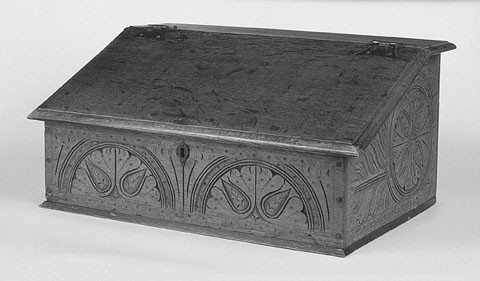
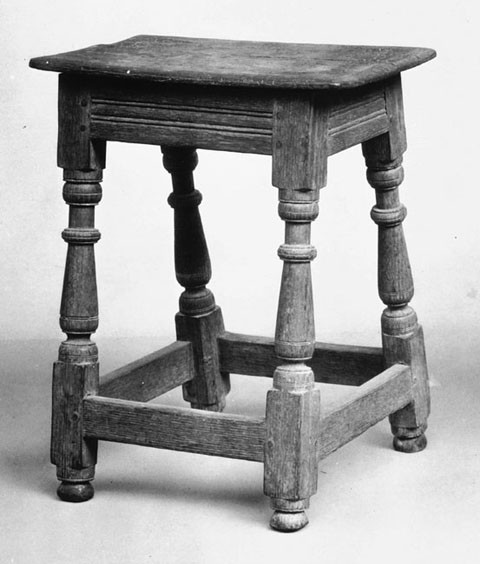
Stool attributed to the Savell Shop, Braintree, Massachusetts, 1640–1680. Oak. H. 21", W. 18", D. 11". (Courtesy, The Metropolitan Museum of Art, gift of Mrs. Russell Sage, 1909). (10.125.330) Photograph, all rights reserved, The Metropolitan Museum of Art.


Detail of two pegs from the door frame of the cupboard illustrated in fig. 2. (Photo, Gavin Ashworth.)

Diagram of (a) typical seventeenth-century New England mortise-and-tenon joint, (b) barefaced mortise-and-tenon joint, (c) Savell shop mortise-and-tenon joint. (Drawing, Peter Follansbee; art work, Wynne Patterson.)
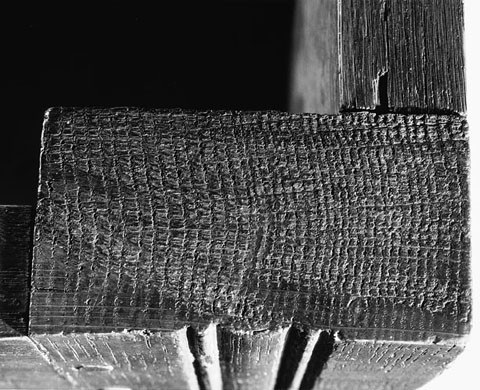
Detail of a mortise-and-tenon joint on the chest illustrated in fig. 1. (Photo, Gavin Ashworth.)
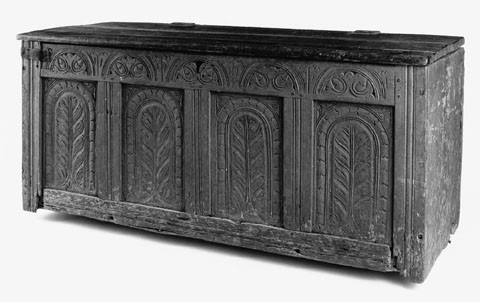
Chest attributed to the Savell shop, Braintree, Massachusetts, 1640–1670. Oak with pine. H. 20 3/8", W. 47 1/8", D. 18 1/2". (Courtesy, Smithsonian Institution, Greenwood Collection; photo, Gavin Ashworth.) This chest and the cupboard illustrated in fig. 2 probably represent the work of William Savell, Sr.
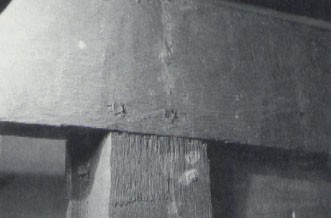
Detail of the hatchet marks on the inner face of the front rail of the cupboard illustrated in fig. 2.

Approximate 1/2-scale drawing of (a) Plymoth Colony pentagonal stile and the billet it is riven from; (b) Savell shop rectangular stile and the larger billet required to produce it. (Drawing, Peter Follansbee; art work, Wynne Patterson.)
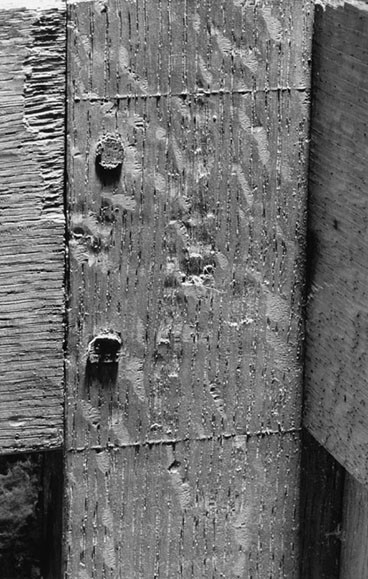
Detail of the layout lines of a mortise-and-tenon joint on the chest illustrated in fig. 1. (Photo, Gavin Ashworth.) The height of the mortise is indicated by the upper scribe line.

Detail of a door frame mortise and tenon on the cupboard illustrated in fig. 2. (Photo, Gavin Ashworth.) The scribe lines from the mortise gauge are visible on the mortise member.

Detail of the board-and-frame construction of the chest illustrated in fig. 9. (Photo, Gavin Ashworth.)
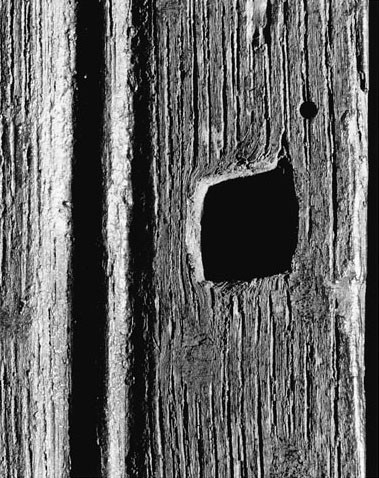
Detail of the hole cut by a piercer on the cupboard illustrated in fig. 2. (Photo, Gavin Ashworth.)
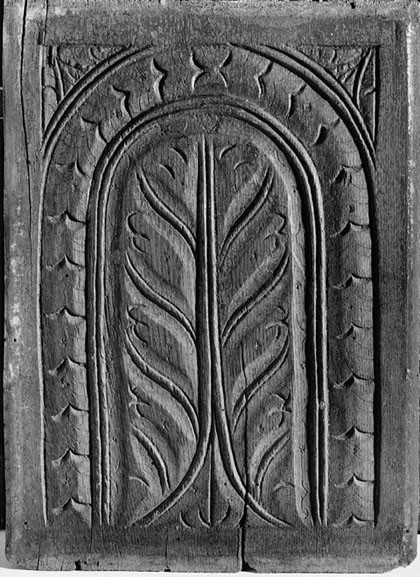
Detail of the carving on the door panel of the cupboard illustrated in fig. 2. (Photo, Gavin Ashworth.) Although a number of hands were involved in the carving of Savell shop pieces, there was virtually no attempt to try anything new.
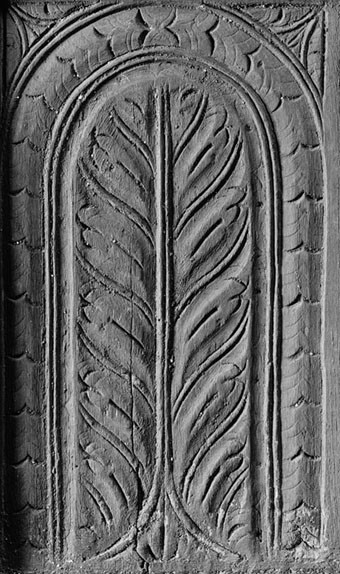
Detail of a carved panel on the chest illustrated in fig. 9. (Photo, Gavin Ashworth.)

Detail of a carved panel on the chest illustrated in fig. 1. (Photo, Gavin Ashworth.)

Detail of a carved panel on the chest illustrated in fig. 20. The carving is less competent than that of figs. 16–18.

Chest attributed to the Savell shop, Braintree, Massachusetts, 1660–1690. Oak and chestnut with pine. H. 33 1/2", W. 56", D. 21 7/8". (Courtesy, Museum of Fine Arts, Boston. Reproduced with permission. ©2000 Museum of Fine Arts, Boston. All rights reserved. Gift of Charles Hitchock Tyler 32.270.)
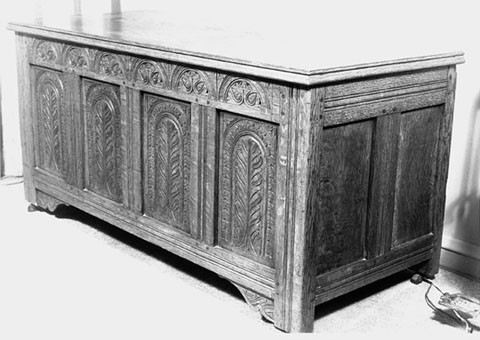
Chest attributed to the Savell shop, Braintree, Massachusetts, 1660–1680. Oak with pine and cedar. H. 22 3/8" (without lid), W. 49 3/8" (case), D. 20 1/8". (Courtesy, Winterthur Museum Decorative Arts Photographic Collection.) This chest may be by John Savell.
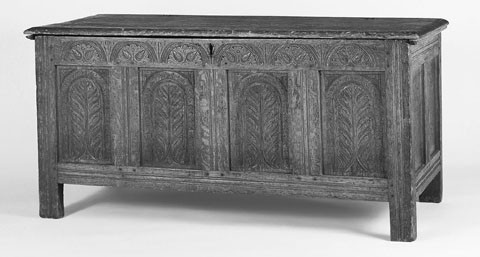
Chest attributed to the Savell shop, Braintree, Massachusetts, 1660–1680. Oak with pine. H. 24 9/16", W. 51 1/2", D. 20 1/2". (Private collection; photo, Dan Gair.)
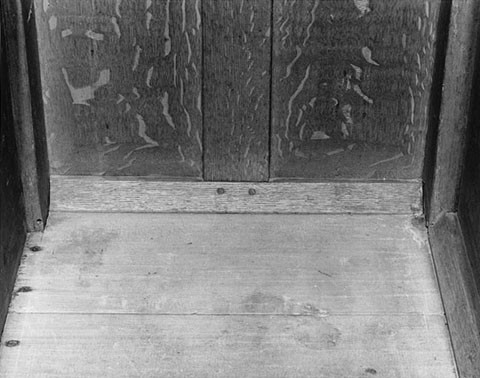
Detail showing the floor framing of (a) the chest illustrated in fig. 1 (interior) and (b) the chest illustrated in fig. 22 (exterior). (Photos, Gavin Ashworth and Dan Gair.)
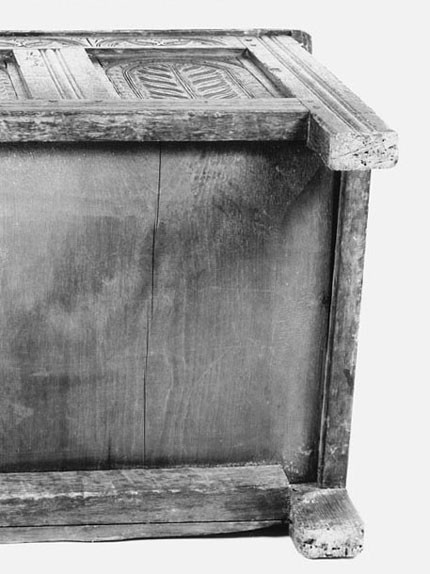
Detail showing the floor framing of (a) the chest illustrated in fig. 1 (interior) and (b) the chest illustrated in fig. 22 (exterior). (Photos, Gavin Ashworth and Dan Gair.)

Detail of the modified tongue-and-groove joint used on the floorboards and the bottom of the drawer of the chest illustrated in fig. 1. The bevel on the underside is slightly concave.

Detail of the construction of the rear frame of the chest illustrated in fig. 1. (Photo, Gavin Ashworth.) The joiner slid the panel into the frame from below. See also fig. 23b.
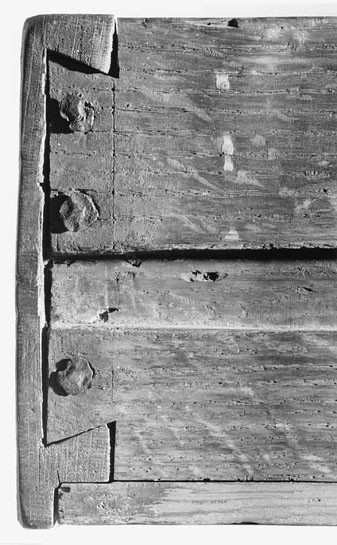
Detail of the drawer construction of the chest illustrated in fig. 1. All of the Savell shop drawers are “side hung” and have one large dovetail nailed through the side. (Photo, Gavin Ashworth.)
